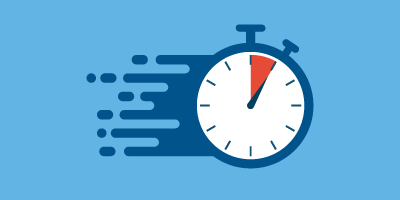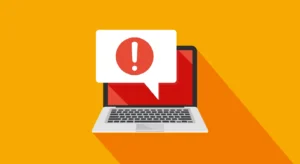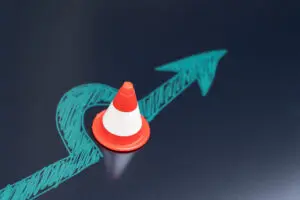Data capture is a pivotal step in streamlining workflows and driving efficiency of Accounts Payable (AP) processes. However, beneath the surface is the challenge of maintaining the accuracy and reliability of data capture methods. Many organizations struggle with outdated Optical Character Recognition (OCR) and Accounts Payable Automation (APA) solutions that promise “around 60%” accuracy rates and require your team to do manual data cleanups. 60% sounds better than nothing, right? But in reality, this level of recognition success can lead to more work than manual data entry! At DataServ, we know this “dirty secret” of data capture and offer a solution that guarantees over 99% accuracy.
Importance of Data Capture in Accounts Payable Processes
Before exploring the intricacies of data capture, it’s essential to understand its fundamental role in AP automation. In AP, countless invoices and documents flood in daily. For literally hundreds of years, humans have been entering the details of these invoices into their accounting system, whether paper ledgers or computerized systems, as the first step of the Accounts Payable process. A talented AP team without any capture technology can often achieve 99% accuracy, but this is time-consuming and quite expensive for most companies today. Even with offshore resources, getting these invoices to those resources can still increase your cost per invoice. Data capture is the foundation for gaining control of Accounts Payable processes, enabling the extraction of crucial information from invoices and documents to drive efficiency, timeliness, accuracy, and cost-effectiveness. It enables further automation throughout the AP process.
- Streamlining Workflows: By leveraging technology, teams can extract relevant data points like invoice numbers, amounts, dates, and vendor details to reduce processing time and human error, as well as accelerate the payment cycle and free up resources to focus on strategic initiatives.
- Enhance Accuracy: Data capture tools employ advanced OCR and machine learning algorithms to achieve remarkable accuracy rates, ensuring the integrity of invoice data to uphold financial reputation and strengthen vendor relationships.
- Facilitate Compliance: Regulatory compliance is non-negotiable, and modern data capture solutions are designed with this in mind, incorporating robust security measures and audit trails to mitigate legal risks and uphold data integrity.
- Empowering Strategic Decision-Making: Digitally centralizing invoice data offers organizations visibility into spending patterns, vendor performance, and cash flow dynamics. This information helps stakeholders identify cost-saving opportunities, negotiate terms with suppliers, and drive strategic initiatives to optimize AP processes.
Embracing advanced data capture technologies and best practices allows organizations to position themselves for success in an increasingly competitive business landscape.
The Flaws of Data Capture
Despite the importance of data capture, traditional OCR methods often fall short. In fact, many companies offering it as a solution tout an average accuracy rate of around 60%, leaving a significant portion of data that requires manual intervention. This low accuracy rate leaves those handling invoices questioning every piece of information that comes through – how can you trust that any of it is accurate? Allowing inaccurate invoice data through the system poses financial risks and not only distracts the AP team but also disrupts the entire ERP ecosystem, creating chaos and inefficiencies that defeat the purpose of automation for AP teams.
The Costly Ripple Effect of Errors
The consequences of inaccurate data entry extend far beyond the initial processing phase. Inaccuracies can result in pools of unmatched invoices in your ERP that need to be worked manually, leading to unpaid vendors, late payments, and costly credit holds. Over time, these errors significantly impact your business, amplifying the total cost of using subpar APA systems and highlighting the need for a more reliable solution like what you’ll receive from DataServ.
Choosing the Wrong Automation Solution is Worse Than Having No Solution
Manual processes may seem laborious, and the allure of automation is undeniable, but investing in subpar AP solutions can prove even more costly and less accurate in the long run. The most overwhelming part is finding the right solution because not all AP systems are created equal. Here are some of the ways the wrong automation solution can hurt your AP processes:
- The Illusion of Efficiency: Automation promises to accelerate AP workflows and reduce manual labor, but a flawed solution may actually exacerbate inefficiencies. Poorly designed software or inadequate OCR technology can lead to errors, rework, and delays, negating any potential time savings. As a result, employees may find themselves spending more time resolving mistakes than they would have with manual processes.
- Improvement Inertia: Once a subpar system or process is implemented, the team tends to continue to work with it even if the results are not good. Whether from fear of failure or fear of more change, this can be devastating for productivity and often goes on far longer than it should. Team members often end up doing more work than they did before the system was implemented because no one wants to admit that the solution is not really working all that well.
- Increased Costs: AP team members who are good at data entry will actually be able to enter entire invoices faster than they can correct OCR errors! The cost of fixing errors and retraining staff can further strain budgets and erode ROI. Investing in an inferior AP automation solution can be more expensive in the long run. Beyond the upfront costs of purchasing and implementing the software, organizations must consider the hidden expenses associated with errors and inefficiencies. Delays, duplicate payments, missed discounts, and vendor disputes can result in significant financial losses far outweighing any purported savings from automation.
- Compromised Accuracy: Subpar OCR or immature AI technology can produce overconfident results – inaccurate but not identified as wrong. These data elements can be passed to downstream systems such as your ERP. Inadequate validation mechanisms, inappropriate skillsets and lack of quality control also further compromise accuracy, leading to costly mistakes and consequences.
- Disruption to Operations: In many instances, implementing a new automation solution inherently disrupts existing workflows and processes, and opting for the wrong solution makes this disruption even worse, causing chaos and frustration among employees. These bad automation solutions can exacerbate existing operational challenges, from incompatible systems and steep learning curves to technical glitches that impede adoption and hinder productivity. The time and resources spent troubleshooting issues also detract from core business activities, prolonging the transition period and delaying the realization of any benefits, much less return on investment.
- Diminished Trust and Confidence: Choosing the wrong automation solution erodes trust and confidence in the technology as well as the team and undermines organizational buy-in. The employees who experience the shortcomings of inadequate software may become skeptical of future automation initiatives, hindering innovation and digital transformation efforts. Payment errors or delays can also tarnish vendor relationships and damage the organization’s reputation and credibility.
DataServ’s Solution: A Guarantee of Accuracy
When it comes to data capture, DataServ stands out. Over 15 years ago, we developed the world’s first SaaS OCR, leveraging the scale and volume of multi-tenant architecture to provide the highest quality and most affordable data capture on the planet. The standard was high: over 99% data accuracy (because that is what human Data Entry can achieve). Before we built it, we spent 10 years in Research and Development and found that the products on the market were not good enough. Because we work almost exclusively with invoices – which are structured but definitely not standardized – we adopted the latest innovation in document capture: semi-structured forms technology. With our experience, we quickly enhanced the OCR with AI- to learn and improve daily. We built integrated document-receiving automation because many bad things come in email. We discovered early on what thousands of other companies have also experienced: the pain associated with the manual cleanup of OCR output. The immutable fact is that data entry and OCR validation are not the same skill sets. So, we built an offshore team solely focused on OCR Validation for AP. This one-of-a-kind resource is so talented that we do not charge clients for their work.
Not only did we build a completely different mouse trap, but we built it to very high standards – those of our clients. That is why we offered the industry’s first accuracy guarantee. Unlike conventional approaches, we removed all of the work, risk, and time associated with gaining access to this invaluable automation. Our Single Stream Invoice Processing Machine is a turnkey service that effectively addresses the 40% gap left by competitors.
Choose DataServ for an AP Automation Solution You Can Rely On
In modern AP workflows, the importance of data capture cannot be overstated. As organizations strive for efficiency and accuracy, choosing the right automation solution becomes essential. At DataServ, our solutions and capabilities make us stand out as a trusted partner, offering you unparalleled accuracy, seamless integration, and long-term cost savings – all backed by our excellent customer service.
Embracing our innovative data capture approach, you can unlock new levels of efficiency and reliability in your company’s AP processes to achieve sustained growth and success. Contact the DataServ team today or schedule a demo online.







